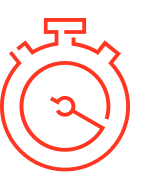The growth of e-commerce, volatility with suppliers, and the risk of global pandemics has shocked and accelerated the demands on supply chains. Companies have found existing models and approaches to predicting demand and managing inventory insufficient for the new normal in retail. A company may have run weekly or monthly aggregate forecasts with limited data sets in the past, but competing in the era of e-commerce where consumers can easily switch stores requires that companies have the ability to predict demand for a SKU at a day and store level.
Data analytics and machine learning in Manufacturing
Solution Accelerators for Manufacturing
Based on best-practices from our work with the leading brands, we’ve developed solution accelerators for common data analytics and machine learning use cases to save weeks or months of development time for your data engineers and data scientists.
Demand Forecasting with Causals
Blog/Notebook:

Time-series Forecasting
Improving the speed and accuracy of time series analyses in order to better forecast demand for products and services is critical to retailers’ success. In this notebook we discuss the importance of time series forecasting, visualize some sample time series data, then build a simple model to show the use of Facebook Prophet. Once you’re comfortable building a single model, we’ll combine Prophet with the magic of Apache Spark™ to show you how to train hundreds of models at once, allowing us to create precise forecasts for each individual product-store combination at a level of granularity rarely achieved until now.
Blog/Notebook:
Case study:
Safety Stock
Natural disasters, pandemics, societal unrest and other factors have all recently caused disruptions to our global supply chains. Ensuring that we have enough product to serve demand, while not carrying too much inventory is a key challenge for every business. This solution provides a modern way of helping retailers and manufacturers identify the optimal safety stock to carry to prevent business disruption while freeing working capital.
ML-based Item Matching
How do manufacturers understand what inventory they have on hand around the globe across hundreds of thousands or possibly millions of parts, where local teams could have different item descriptions across internal systems? Or how can a manufacturer resolve differences between their product definitions and those product descriptions across dozens of retail partners? This solution uses machine learning to evolve rules-based and probabilistic (fuzzy) matching techniques for effective product matching on imperfect data.
Scaling ML Models for IoT
In order to train machine learning models on real-time data coming from an IoT sensors, some use cases require each connected device to have its own individual model since many basic machine learning algorithms often outperform a single complex model. However, this can lead to IoT and per-device data so large that it won’t fit on any one machine, per-device data does fit on a single machine. Additionally, the data science team is implementing using single node libraries like sklearn and pandas, so they need low friction in distributing their single-machine proof of concept. In this blog, we demonstrate how you solve this problem with two distinct schemes for each IoT device: Model Training and Model Scoring.
Blog/Notebook:
Predictive Maintenance
Maintaining assets such as compressors is an extremely complex endeavor: they are used in everything from small drilling rigs to deep-water platforms, the assets are located across the globe, and they generate terabytes of data daily. A failure for just one of these compressors costs millions of dollars of lost production per day. In this solution, we teach you how to build an end-to-end predictive data pipeline that can provide a real-time database to maintain asset parts and sensor mappings, support a continuous application that processes a massive amount of telemetry, and allows you to predict compressor failures against these datasets.